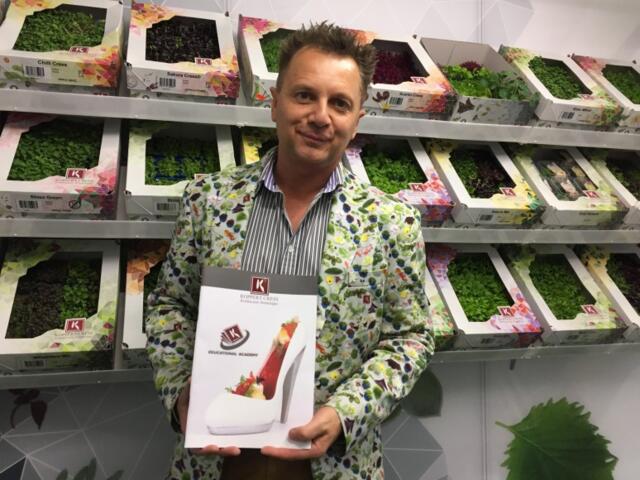
Microgreens 'much more than just confetti'
Category: World of Plants
Educational programme from Koppert Cress encourages budding chefs to use microgreens for nutrition and flavour, not just aesthetics.
Educational programme from Koppert Cress encourages budding chefs to use microgreens for nutrition and flavour, not just aesthetics. Dutch microgreen specialist Koppert Cress has launched a college programme to teach UK catering students what microgreens are and how they can be used to add nutritional and flavour to a dish, as well as just colour.
The course, launched at several UK colleges in September for the current academic year, addresses what growing company sees as a knowledge gap in the understanding of microgreens and their use in foodservice.
The focus of the programme, which will run alongside catering courses at Loughborough College, Westminster Kingsway College and Sheffield College among several others, is on teaching students the difference between a microgreen and a pre-cut cress, both of which have become a popular garnish in the foodservice sector, particularly at high-end restaurants.
A 70-page teaching manual, distributed to lecturers at the colleges, provides a blueprint for the course, which highlights the benefits of using and eating microgreens, as well as describing their flavour profiles and suggesting food pairings.
The document also includes recipe suggestions, but as part of the programme, students are encouraged to be creative themselves in how they can use microgreens to enhance a menu.
Koppert Cress has held training days and distributed lesson plans to the colleges involved to guide lecturers in how to teach the course.
Microgreens, which are typically harvested after just one to two weeks, are the baby version of a mature vegetable. They are sold as living plants in biodegradable cellulose and tend to have more nutritional value than pre-cut cresses, whose nutrient levels diminish once harvested.
For example, Koppert Cress claims that 30g of BroccoCress, one of its branded microgreens, contains 50 times more sulforaphane than an entire head of fully-grown broccoli. The phytochemical is thought to help prevent cancer.
“A lot of chefs will use punnet cress as a decoration because it looks pretty, but microgreens add far more nutrition and flavour to a dish,” said Koppert Cress country manager Paul Da Costa Greaves, speaking at the Restaurant Show at London’s Olympia exhibition centre
“The micros world is huge and everyone wants to be a part of it, which is great, but we want to make sure they are being used for their health benefits and not just like confetti.”
Related articles
Also interesting